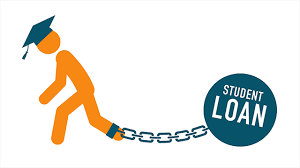Iowa/June 16, 2023 (SPN) | In the coming days or weeks, Iowans will anxiously await the verdict of the US Supreme Court regarding President Biden’s ambitious student debt relief plan.
Introduced last August, the plan aims to provide financial respite to millions of college graduates burdened by student loans. Under the proposal, individuals earning $125,000 per year or less, or households earning $250,000 or less, would qualify for federal loan forgiveness of up to $10,000. Those who received a Pell Grant during their college years could even see this amount doubled to $20,000.
The announcement of the student debt relief plan sparked a wave of controversy, with some arguing that the President lacks the authority to forgive student debt. Detractors also voiced concerns over the fairness of erasing some graduates’ loans while others have already painstakingly repaid theirs.
Biden Administration’s Legal Basis for Debt Forgiveness
The Biden Administration contends that the President has the necessary authority under the HEROES Act, a statute enacted in response to the September 11, 2001 terrorist attacks, designed to assist service members financially.
The act, now extended, empowers the Secretary of Education to modify or eliminate federal student loans. By invoking the HEROES Act, President Biden’s administration seeks to justify their assertion of authority to implement the student debt relief plan.
Supreme Court Challenge and Potential Implications
Since the announcement of the student debt forgiveness program, multiple lawsuits have been filed by individuals, organizations, and governments aiming to halt its implementation. Among these legal challenges, one case has made its way to the Supreme Court, which is expected to render a decision in the near future.
Legal experts and court observers anticipate that the Supreme Court may deem Biden’s move unconstitutional, relying on the major-questions doctrine. However, this outcome would also hinge on whether the plaintiff in the case, MOHELA, a Missouri state-affiliated debt servicer, has standing to sue.
Should the Supreme Court rule against President Biden, it would deal a significant blow to the cause of student debt forgiveness. Nevertheless, there exists an alternative legal path that could allow Biden to unilaterally forgive a substantial portion of student debt, bypassing the need for an expansive interpretation of the post-9/11 statute.
Leveraging Existing Legislation for Debt Forgiveness
The Higher Education Act (HEA), a piece of legislation passed by Congress, not only authorizes but mandates the Department of Education (DOE) to establish income-driven repayment (IDR) programs for student loans. The HEA specifically outlines the parameters of one such program called income-based repayment (IBR) in its statute (20 USC 1098e).
Additionally, the HEA grants the DOE the authority to create income-driven repayment programs of its choosing, known as income-contingent repayment (ICR) programs, with flexible parameters (20 USC 1087e(e)).
Under the DOE’s authority, three IDR programs have already been established: Income-Contingent Repayment, Pay As You Earn (PAYE), and Revised Pay As You Earn (REPAYE).
These programs require students to make payments based on a percentage of their income beyond a certain threshold of the poverty line for a specified number of years in order to qualify for debt forgiveness. The specific parameters of these programs can be set by the DOE, with some limitations on the minimum thresholds outlined in the HEA.
President Biden’s debt forgiveness plan includes a proposed amendment to the REPAYE IDR program. The amendment would alter the forgiveness terms so that students who have paid 5 percent of their income beyond 225 percent of the poverty line for either 10 or 20 years, depending on their loan balance, would be eligible for forgiveness.
While the media’s attention has predominantly focused on the $10,000 forgiveness component, this change has the potential to alleviate a significantly larger amount of student debt, provided that it is implemented effectively.
The US Supreme Court’s impending decision on President Biden’s student debt relief plan has generated widespread interest and debate. The outcome will have far-reaching implications for the future of student debt forgiveness.
Simultaneously, alternative legal avenues exist, allowing the administration to pursue debt relief by leveraging existing legislation and IDR programs. As the nation awaits the court’s decision, the plight of millions of student loan borrowers hangs in the balance, awaiting a resolution that could shape their financial futures.

